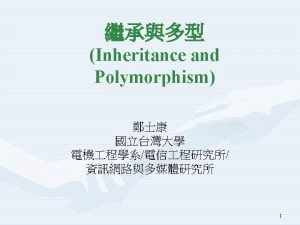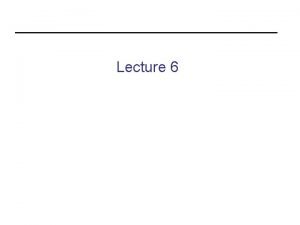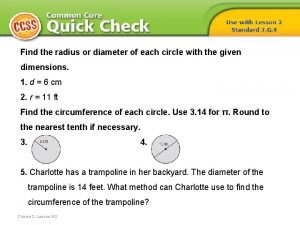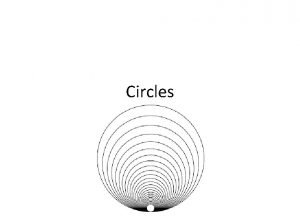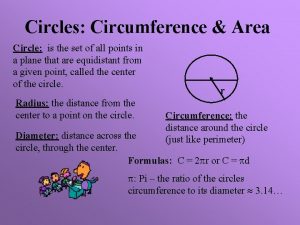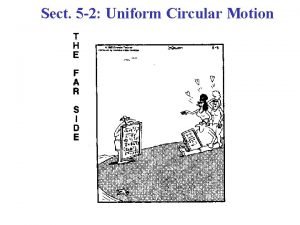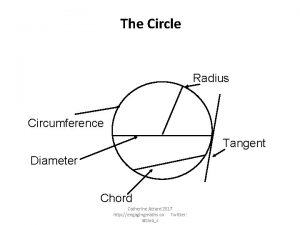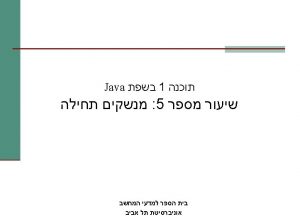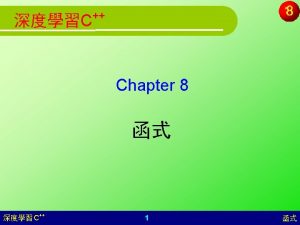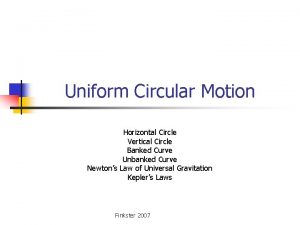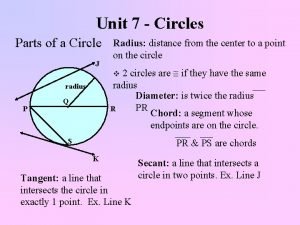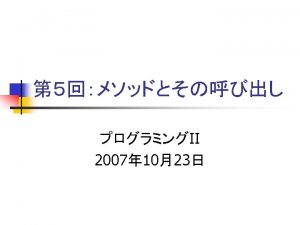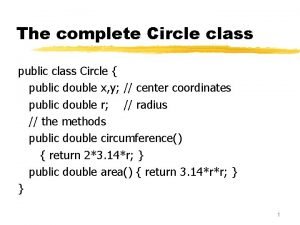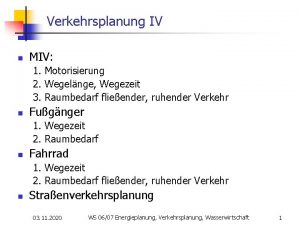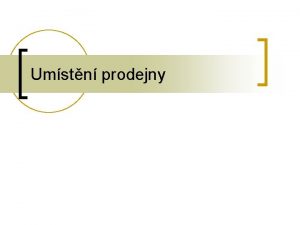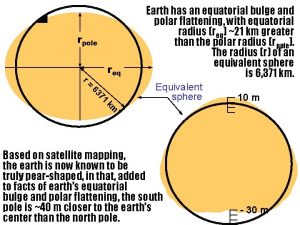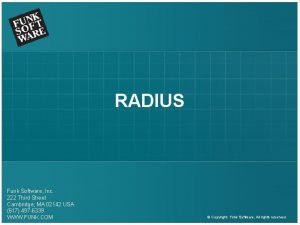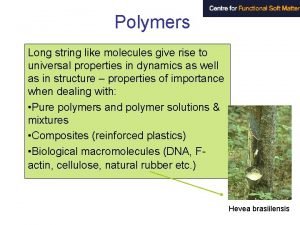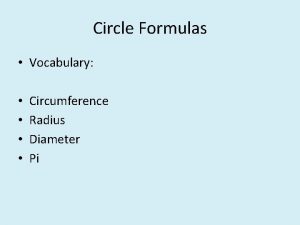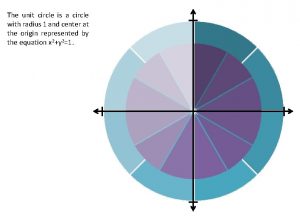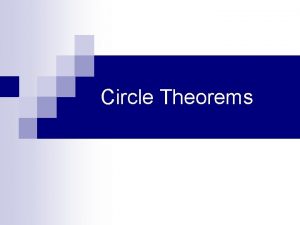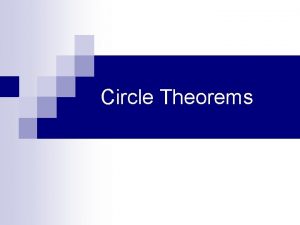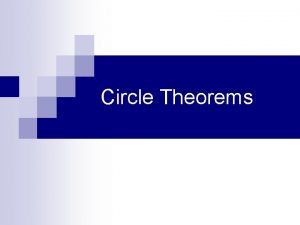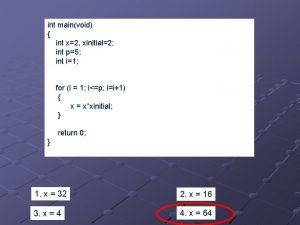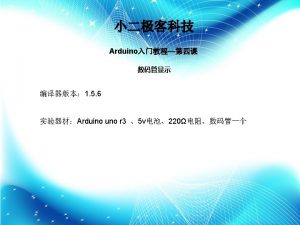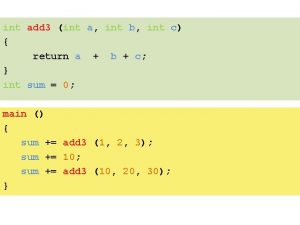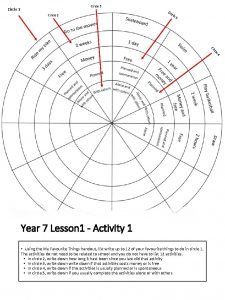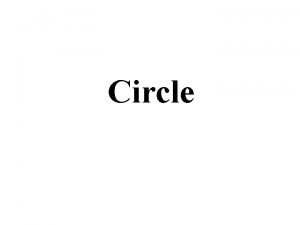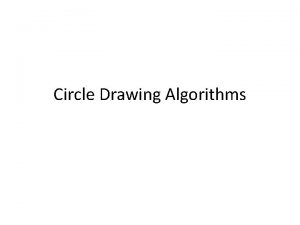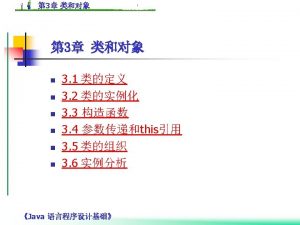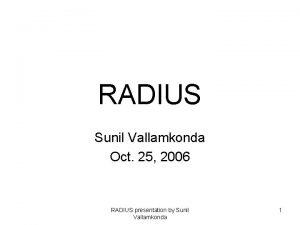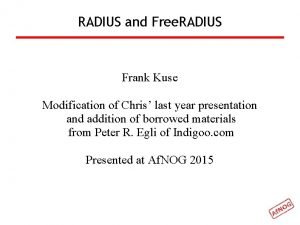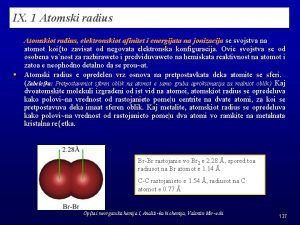class Circle int x y int radius class



























































- Slides: 59


이번 장에서 만들어 볼 프로그램 class Circle { int x, y; int radius; . . . } class Rect { int x, y; int width, height; . . . } 중복






// 한 점을 표현하는 클래스 Point 선언 class Point { int x, y; //(x, y) 좌표값 public: void set(int x, int y) 8 { this->x = x; this->y = y; } void show. Point() { cout << "(" << x << ", " << y << ")" << endl; class Color. Point : public Point { } string color; // 점의 색 표현 }; public: void set. Color(string color) { this->color = color; } void show. Color. Point(); }; 예제 void Color. Point: : show. Color. Point() { cout << color << ": "; show. Point(); } int main() { Point p; Color. Point cp; cp. set(3, 4); cp. set. Color("Red"); cp. show. Color. Point(); }


자식 클래스의 객체 구성 10 class Point { int x, y; public: void set(int x, int y); void show. Point(); }; class Color. Point : public Point { string color; public: void set. Color(string color); void show. Color. Point(); }; Color. Point cp; Point p; int x int y void set() {. . . } void show. Point() {. . . } 자식클래스의 객체는 기본 클래스의 멤버 포함 기본클래스 멤버 void show. Point() {. . . } string color void set. Color () {. . . } void show. Color. Point() {. . . } 자식클래스 멤버

자식 클래스에서 기본 클래스 멤 버 접근 Color. Point cp 객체 11 x y 자식클래스에서 기본 클래스 멤버 호출 void set(int x, int y) { this->x= x; this->y=y; } void show. Point() { cout << x << y; } color void set. Color ( ) {. . . } void show. Color. Point() { cout << color << ": "; show. Point(); } Point 멤버 Color. Point 멤버

12 외부에서 자식 클래스 객체에 대 한 접근 3 x y 4 void set(int x, int y) { this->x= x; this->y=y; } void show. Point() { cout << x << y; } color Color. Point cp; cp. set(3, 4); cp. set. Color("Red"); cp. show. Color. Point(); “Red” void set. Color (string color) { this->color = color; } void show. Color. Point() { cout << color << ": "; show. Point(); } main() Color. Point cp 객체

예제 class Car { int speed; }; class Sports. Car : public Car { bool turbo; };


class Car { int speed; // 속도 예제 public: void set. Speed(int s) { speed = s; } int get. Speed() { return speed; } }; // Car 클래스를 상속받아서 다음과 같이 Sports. Car 클래스를 작성한다. class Sports. Car : public Car { int main() bool turbo; { public: Sports. Car c; void set. Turbo(bool new. Value) { turbo = new. Value; c. set. Speed(60); } c. set. Turbo(true); bool get. Turbo() { c. set. Speed(100); return turbo; c. set. Turbo(false); } return 0; }; }







class Shape { int x, y; public: void set. X(int xval) { x = xval; } void set. Y(int yval) { y = yval; } }; 예제 class Rectangle : public Shape { int width, height; public: void set. Width(int w) { width = w; } void set. Height(int h) { height = h; } int get. Area() { return (width * height); } }; int main() { Rectangle r; r. set. Width(5); r. set. Height(6); cout << "사각형의 면적: " << r. get. Area() << endl; return 0; }




class Shape { int x, y; public: Shape() { ~Shape() { }; 예제 class Rectangle : public Shape { int width, height; public: Rectangle() { } ~Rectangle() { } }; int main() { Rectangle r; return 0; } cout << "Shape 생성자() " << endl; } cout << "Shape 소멸자() " << endl; } cout << "Rectangle 생성자()" << endl; cout << "Rectangle 소멸자()" << endl; 실행 결과 는?







부모 클래스 생성자 호출 다음에 멤버 초기화 리스트를 작성할 수 있음 Rectangle(int x=0, int y=0, int w=0, int h=0) : Shape(x, y) { width = w; height = h; } Rectangle(int x=0, int y=0, int w=0, int h=0) : Shape(x, y), width(w), height(h) {}

class Shape { int x, y; public: Shape() { cout << "Shape 생성자() " << endl; } Shape(int xloc, int yloc) : x{xloc}, y{yloc} { cout << "Shape 생성자(xloc, yloc) " << endl; } ~Shape() { cout << "Shape 소멸자() " << endl; } }; class Rectangle : public Shape { 예제 int width, height; public: Rectangle: : Rectangle(int x, int y, int w, int h) : Shape(x, y) { width = w; height = h; cout << "Rectangle 생성자(x, y, w, h)" << endl; } ~Rectangle() { cout << "Rectangle 소멸자()" << endl; } };

class Shape { int x, y; public: 예제 Shape() { cout << "Shape 생성자() " << endl; } Shape(int xloc, int yloc) : x{xloc}, y{yloc} { cout << "Shape 생성자(xloc, yloc) " << endl; } ~Shape() { cout << "Shape 소멸자() " << endl; } class Rectangle : public Shape { }; int width, height; public: Rectangle: : Rectangle(int x, int y, int w, int h) : Shape(x, y) { width = w; height = h; cout << "Rectangle 생성자(x, y, w, h)" << endl; } ~Rectangle() { cout << "Rectangle 소멸자()" << endl; } }; 실행 결과는 ? int main() { Rectangle r(0, 0, 100); return 0; }


class Rect { protected: int x, y, width, height; public: Rect(int x, int y, int w, int h) : x(x), y(y), width(h), height(h) { } void draw() { HDC hdc = Get. Window. DC(Get. Foreground. Window()); Rectangle(hdc, x, y, x + width, y + height); } }; class Colored. Rect : Rect { int red, green, blue; public: Colored. Rect(int x, int y, int w, int h, int r, int g, int b) : Rect(x, y, h, w), red(r), green(g), blue(b) { } void draw() { HDC hdc = Get. Window. DC(Get. Foreground. Window()); Select. Object(hdc, Get. Stock. Object(DC_BRUSH)); Set. DCBrush. Color(hdc, RGB(red, green, blue)); Rectangle(hdc, x, y, x + width, y + height); } }; 예제

예제 int main() { Rect r 1(100, 80, 80); Colored. Rect r 2(200, 80, 255, 0, 0); r 1. draw(); r 2. draw(); return 0; }




멤버의 접근 지정에 따른 접근성 42 외부 함수 기본 클래스 void function() { class A { private: private 멤버 protected: protected 멤버 public: public 멤버 }; } class B : public A { }; 자식 클래스 다른 클래스 class C { };

class Person { string name; protected: string address; }; 예제 class Student : public Person { public: void set. Address(string add) { address = add; } string get. Address() { return address; } }; int main() { Student obj; obj. set. Address("서울시 종로구 1번지"); cout << obj. get. Address() << endl; return 0; }


#include <iostream> #include <string> using namespace std; 예제 class Animal { public: void speak() { cout << "동물이 소리를 내고 있음" << endl; } }; class Dog : public Animal { public: void speak() { cout << "멍멍!" << endl; } }; int main() { Dog obj; obj. speak(); return 0; }



예제 #include <iostream> #include <string> using namespace std; class Parent. Class { public: void print() { cout << "부모 클래스의 print() 멤버 함수" << endl; } }; class Child. Class : public Parent. Class { int data; public: void print() { //멤버 함수 재정의 Parent. Class: : print(); cout << "자식 클래스의 print() 멤버 함수 " << endl; } };



51 상속 시 접근 지정에 따른 멤버의 접 근 지정 속성 변화 class Base { private: int a; protected: int b; public: int c; }; public 상 속 상속 후 Derived class Derived : public Base {. . // Derived 멤버 }; protected: int b; public: int c; . . // Derived 멤버 protected 상속 private 상 속 class Derived : protected Base {. . // Derived 멤버 }; class Derived : private Base {. . // Derived 멤버 }; Base 영역 Derived 영역 상속 후 Derived protected: int b; int c; Base 영역 . . // Derived 멤버 Derived 영역 상속 후 Derived private: int b; int c; . . // Derived 멤버 Base 영역 Derived 영역

에제 #include <iostream> using namespace std; class Base { public: int x; protected: int y; private: int z; }; class Derived : private Base{ // x는 자식 클래스에서 사용가능하지만 private로 지정된다. // y는 자식 클래스에서 사용가능하지만 private로 지정된다. // z는 자식 클래스에서도 사용할 수 없다. }; int main() { Derived obj; cout << obj. x; }


에제 class Sprite { int x, y; string image; public: Sprite(int x, int y, string image) : x(x), y(y), image(image) { } void draw() { } int main() void move() { }; Alien a( 0, 100, "image 1. jpg" ); Player p(0, 100, "image 1. jpg"); return 0; class Alien : public Sprite { int speed; } public: Alien(int x, int y, string image) : Sprite(x, y, image) { } void move() { } }; class Player : public Sprite { string name; public: Player(int x, int y, string image) : Sprite(x, y, image) { } void move() { } };


class Passanger. Car { public: int seats; // 정원 void set_seats(int n) { seats = n; } }; 에제 class Truck { public: int payload; // 적재 하중 void set_payload(int load) { payload = load; } }; class Pickup : public Passanger. Car, public Truck { public: int tow_capability; // 견인 능력 void set_tow(int capa) { tow_capability = capa; } int main() }; { Pickup my_car; my_car. set_seats(4); my_car. set_payload(10000); my_car. set_tow(30000); return 0; }

57 예제: Adder와 Subtractor를 다중 상 속받는 Calculator 작성 class Adder { protected: int add(int a, int b) { return a+b; } }; class Subtractor { protected: int minus(int a, int b) { return a-b; } }; // 다중 상속 class Calculator : public Adder, public Subtractor { public: int calc(char op, int a, int b); }; int Calculator: : calc(char op, int a, int b) { int res=0; switch(op) { case '+' : res = add(a, b); break; case '-' : res = minus(a, b); break; } return res; } int main() { Calculator hand. Calculator; cout << "2 + 4 = " << hand. Calculator. calc('+', 2, 4) << endl; cout << "100 - 8 = " << hand. Calculator. calc('-', 100, 8) << endl; }

다중 상속 문제점 상속되는 두 클래스에 동일한 멤버 변수가 존재할 경우 class Super. A { public: int x; void sub() { cout<<“Super. A의 sub()”<<endl; } }; class Super. B { public: int x; void sub() { cout<<“Super. B의 sub()”<<endl; } }; class Sub: public Super. A, public Super. B { }; int main() { Sub obj; obj. x = 10; //? return 0; }

다중 상속 문제점 상속되는 두 클래스에 동일한 멤버 변수가 존재할 경우에 , 그 변수 앞에 ‘: : ’를 이용하여 해당 클래스 이름을 명시해 야함 class Super. A { public: int x; void sub() { cout<<“Super. A의 sub()”<<endl; } }; class Super. B { public: int x; void sub() { cout<<“Super. B의 sub()”<<endl; } }; class Sub: public Super. A, public Super. B { }; int main() { Sub obj; obj. Super. A: : x = 10; return 0; }
 Int sum(int a int n) int sum=0 i
Int sum(int a int n) int sum=0 i Inheritance calculator
Inheritance calculator Int max(int x int y)
Int max(int x int y) Public void drawsquare(int x, int y, int len)
Public void drawsquare(int x, int y, int len) Divideint
Divideint Atomic radius on periodic table
Atomic radius on periodic table Find the radius and diameter of each circle
Find the radius and diameter of each circle Chord secant
Chord secant Area around circle
Area around circle Chord tangent radius diameter
Chord tangent radius diameter How to label a circle
How to label a circle Radius of each small circle
Radius of each small circle Radius and diameter of a circle
Radius and diameter of a circle Centripetal force inward or outward
Centripetal force inward or outward Circle radius
Circle radius Circle radius diameter chord circumference
Circle radius diameter chord circumference Parts of the circle in math
Parts of the circle in math Interface myinterface int foo(int x)
Interface myinterface int foo(int x) Int main int argc char argv
Int main int argc char argv Nnxn com
Nnxn com Int factorial(int n)
Int factorial(int n) Const arduino
Const arduino Int main int num 4
Int main int num 4 Voidswap
Voidswap Void f(int i) int j=0
Void f(int i) int j=0 Max int
Max int Char argv
Char argv V=2πr
V=2πr Circle j is congruent to circle p
Circle j is congruent to circle p Inequality open circle or closed
Inequality open circle or closed Circle a is tangent to circle b. true false
Circle a is tangent to circle b. true false Class bucket int capacity
Class bucket int capacity Class person string name int age
Class person string name int age Public class welcome public static int test
Public class welcome public static int test Interface
Interface Class math static int x
Class math static int x Function plotter
Function plotter Wimax radius billing
Wimax radius billing Smallest atomic radius
Smallest atomic radius A cone has a volume of 98cm3 the radius of the cone is 5.13
A cone has a volume of 98cm3 the radius of the cone is 5.13 Schleppkurve pkw radius
Schleppkurve pkw radius Tropical radius
Tropical radius Critical radius of insulation
Critical radius of insulation Nákupní spád
Nákupní spád Titanic turning radius
Titanic turning radius Trends for atomic radius
Trends for atomic radius Smallest atomic radius
Smallest atomic radius Escape velocity of neutron star
Escape velocity of neutron star How to calculate the schwarzschild radius
How to calculate the schwarzschild radius Nuclear charge periodic trend
Nuclear charge periodic trend Trend of ionic radius
Trend of ionic radius Equatorial radius of the earth
Equatorial radius of the earth Radius of gyration of polymer
Radius of gyration of polymer Limiting radius ratio
Limiting radius ratio Funk proxy software
Funk proxy software Freeradius alternatives
Freeradius alternatives Bras radius
Bras radius Air gap technique
Air gap technique Akční rádius prodejny
Akční rádius prodejny Radius of gyration of polymer
Radius of gyration of polymer

